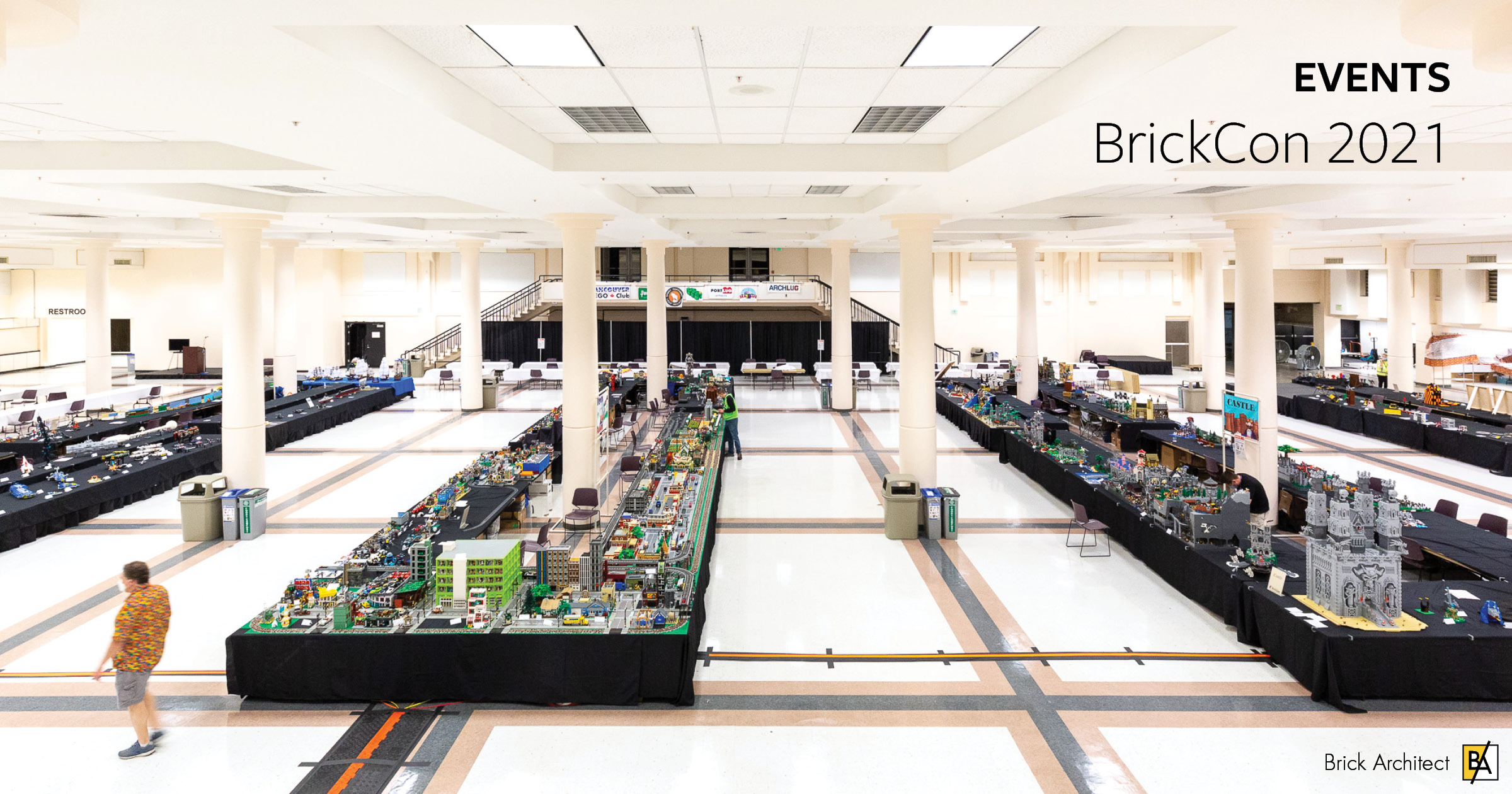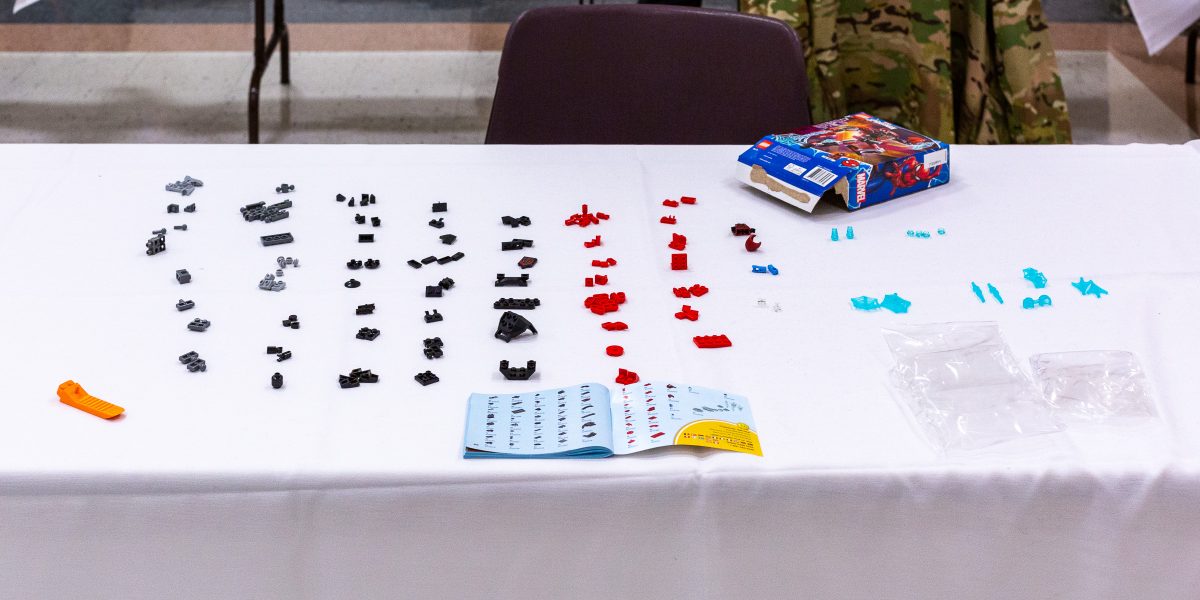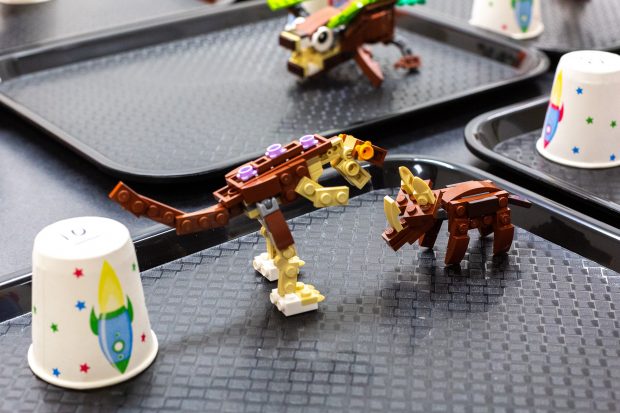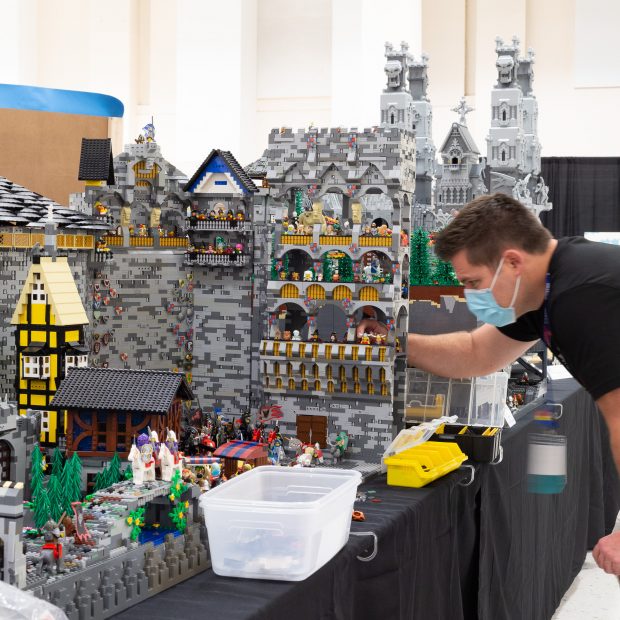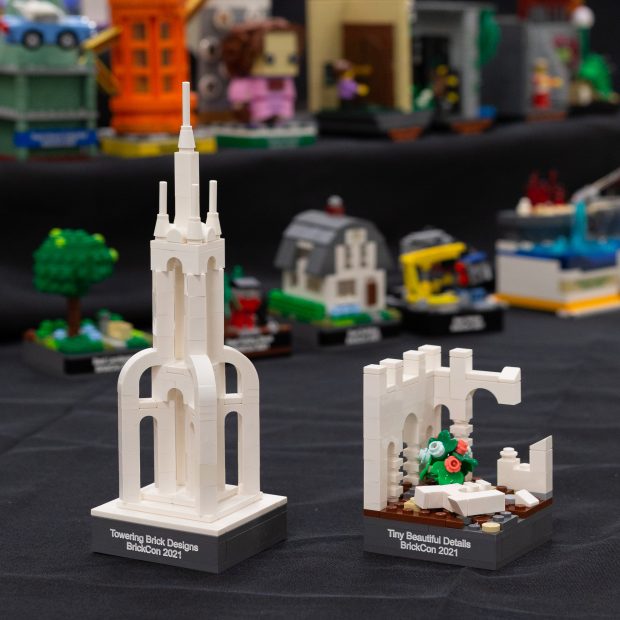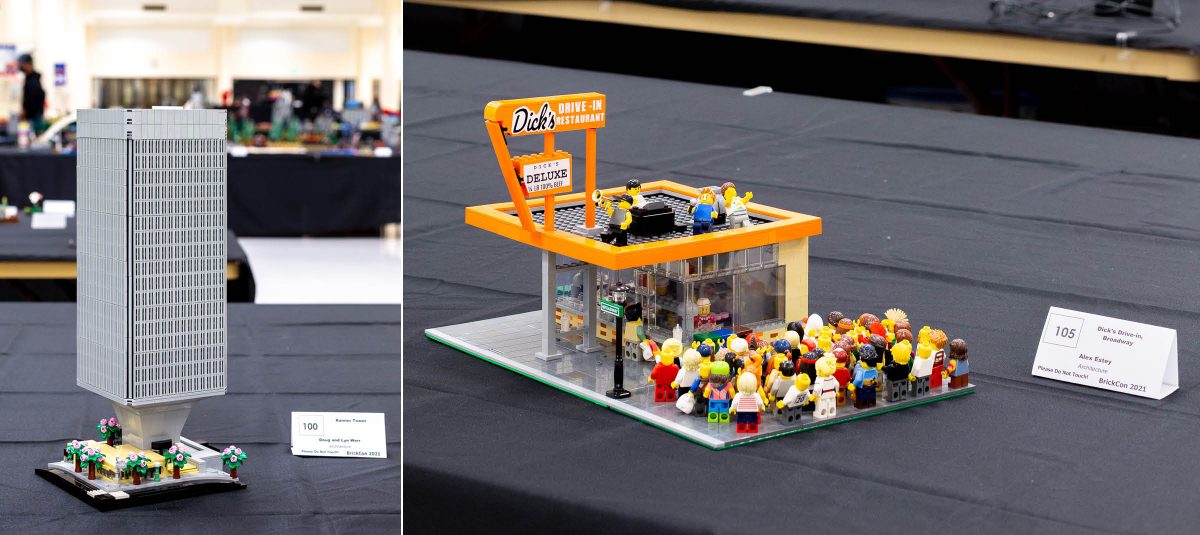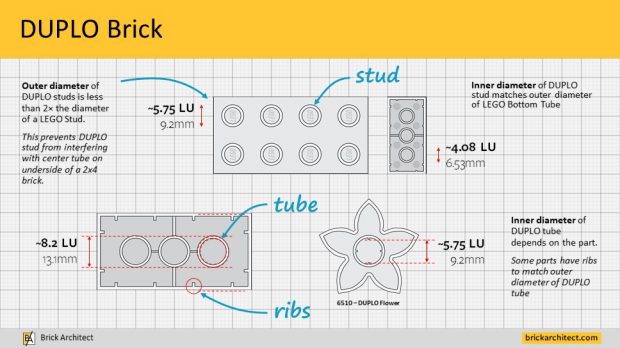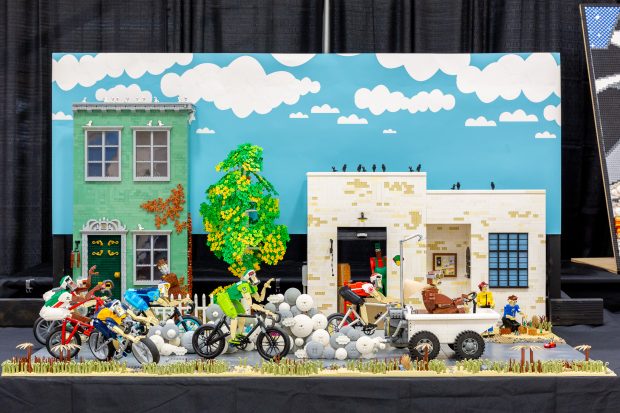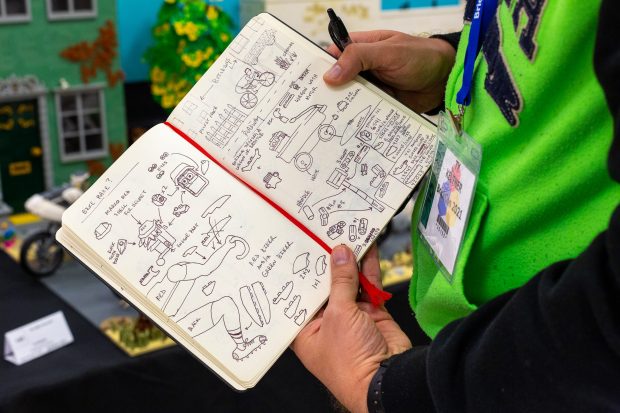BrickCon 2021 LEGO Convention
How does it feel to attend my first in-person LEGO convention after a year-and-a-half break — great, mostly…
After a 1.5 year hiatus from in-person conventions due to the COVID-19 pandemic, BrickCon 2021 was my first chance to see fellow AFOLs in person. This year’s convention was smaller in scope due to the inability for our Canadian friends to attend due to border closures, and others who have decided not to attend due to health concerns. That said, the models on display were fantastic and varied, the games were fun (as usual), and we had a richer selection of talks since the organizers decided to make this a “hybrid” convention.
This article blends a summary of the activities during the three-day event with my reflections on how the pandemic year has shaped my feelings about the hobby, as well as those of new and long-time friends who I spoke with throughout the event.
Games
Due to the shortened schedule (BrickCon is usually 4 days long), all of the games were packed into the Friday session. That’s because we use the Expo Hall for the games, since we need lots of space to set up several dozen folding tables and chairs! The selection of games very similar to past years, with familiar games like the Blind Build, Speed Build, Team Blind Build, Speed Un-Build, and Master Build competitions. I really enjoy participating in the games, so I signed up for three of them.
In the Blind Build competition, you have to build a 100-200 piece set with your hands and the parts beneath a triangular-shaped blackout tent. Blessedly, you are given a cafeteria tray to help organize the parts and prevent them from rolling onto the floor. Your score is based on the time it takes to complete the model, with a large time penalty for parts errors, and a smaller penalty when you put the wrong color in the right place.
This particular set was a doozy – It had a lot of cases where the same part came in multiple colors. It also had a lot of round parts that roll around on your tray. I usually finish the model in a reasonable time, but most of us gave up at around one hour after a winner was been declared.
In Speed Un-Build we are given 15 minutes to build a small set at our own pace; when the timer begins, it is a race to not only dis-assemble the model, but organize all of the parts in the exact order shown on the last page of the instructions! This is the only game this year where I was happy with my performance of about 5th place out of about 50 participants.
Lastly, there’s the Master Build – the only challenge at this show where you are asked to build something without the instructions. We were given a very rare (and expensive) Chinese Zodiac set: #40207 Year of the Monkey (2016), but instead of building a monkey, the challenge was: “Today Build Dinosaurs”. My T-Rex was passable, but not good enough to put me in finals round the next day.
My main realization during the three games was that it’s been a long time since I’ve just sat down and built LEGO without having to worry about writing a review. It’s also fun to build LEGO with friends, since there’s nothing stopping us from talking while we play. Maybe I’m just maturing as a LEGO builder (or my collection has grown a lot over the years), but I was honestly more excited to have dedicated time to build than receiving free LEGO sets.
Public Exhibition
My other focus on Friday was to try and see as many of the fantastic models on display as possible. Since we’re not ready to bring our un-vaccinated son to see the models in person, the highlight of the afternoon was to give him a much longer than anticipated tour of the show via video chat. The larger models and ones with moving elements caught his attention the most, but he found it all interesting. I was surprised to see how long the models held his attention, since he is just barely 3 years old!
For the first time, I also had the responsibilities of a Theme Coordinator – which meant that I needed to decide which awards would be given out, create the trophies, and pick the winners for my theme. It’s not a surprise that I was asked to organize the Architecture theme. Given the “TBD” theme for this year’s BrickCon, I settled on two trophies: “Tiny Beautiful Details” for the model with the most intricate detailing, and “Towering Brick Designs” for the model which is both big and beautiful.
I’m happy with my design for the two trophies, although next year I will allow myself a bit more time to design them. (I went with the mostly white style that I’m best known for, largely because I have a lot of white bricks on hand.)
The award for “Towering Brick Design” went to Doug and Lyn Werr, for their faithful (and impressively large) re-creation of Seattle’s Rainier Tower. (It’s sometimes referred to as the “beaver building” for obvious reasons.)
On the more playful side, the “Tiny Beautiful Details” award went to Alex Estey for another iconic Seattle building – Dick’s Drive-in, on Broadway. The scene represents the pop-up concert on the rooftop which is featured in the music video for White Walls, by local artist Macklemore.
Virtual BrickCon
In addition to the physical convention, the organizers built on what they learned from last year’s fully virtual convention and offered a virtual option this year as well. This gave folks who are unable to attend in person the opportunity to participate in the talks, keynotes, and awards ceremonies. They even did an hour-long tour of the show just for the virtual attendees!
The virtual features also make the show better for folks who are able to attend in person. By leaning-in to the global community, we had a more diverse selection of talks than usual. This included Richard Jones’s in-depth exploration of the history of LEGO Space theme (which he delivered from his home in Australia), and talks by several LEGO employees including two set designers. These remote presentations were projected to in-person attendees in the auditorium, and the facilitators did a great job of taking questions from both in-person and virtual attendees.
The hybrid approach also helped me balance my time better. Even though I attended most of the show in-person, I called in to two talks on Saturday morning so I could help around the house a bit more before an afternoon of in-person activities. I was also able to wind-down on Sunday evening in the virtual hangout; well after the physical show had ended!
The organizers are committed to making the hybrid approach work, which I hope allows the annual event to grow into a global phenomenon, even though the physical convention is constrained by venues available to us in the Seattle area. Maybe one year we will have more virtual attendees than in-person ones!
Presentations
As a very nerdy LEGO enthusiast, I relish the opportunity to learn from some of the most knowledgeable LEGO builders in the world. I also try to give back to the community by exploring topics such as the most common LEGO parts and Colors, or this year’s talk exploring the various LEGO connection types in detail.
In the opening ceremony, local LEGO enthusiast Hillel Cooperman kicked of the show with an impassioned plea that we abandon both the AFOL term, and the elitism that can come with it in favor of a more inclusive, cooperative, and positive mindset. Leaning in to a sense of discovery, and a wee bit of Classic Space vibes, he suggested that we become LEGONAUTS instead. It was a joyous presentation and a much needed invitation to focus on the most positive aspects of our hobby.
One of the greatest pleasures is to hear from LEGO set designers about the stories behind our favorite sets. At BrickCon this year, we heard from two LEGO Designers. John Ho has designed several sets, but spent most if his time talking about the unique challenges in bringing the LEGO Ideas set based on Steamboat Willie to life. This included the challenge of finding the right scale for the set, since the original submission was very small, and the model would need to be really large to include all of the details in the cartoon. It was neat to see photos of the various iterations! Ultimately, they settled on a medium-sized model to balance details and the final set price.
We also heard from Rok Zgalin Kobe, the designer responsible for my favorite theme, LEGO Architecture. His most recent set was the Barcelona FC Stadium, which he compared with the Old Trafford set which is at a comparable scale. The most interesting decision that he explained was how they made the stadium out of several separate modules to significantly reduce the set cost, especially compared to something like the Colosseum, which he also designed. In order to make the Colosseum strong enough to lift, they had to dedicate a large portion of the budget to the rigid base.
The other recent set he discussed in detail was the smaller new version of the Taj Mahal, which is part of the Architecture series. The older set was about three times the cost and size, since it was a Creator Expert set, but he worked hard to capture almost all of the same building details in the smaller version. This is what’s possible with advanced building techniques and modern parts.
My talk was a complicated exploration of all three LEGO Systems of play: LEGO, DUPLO, and Technic. I walked through all the common connection types, with the hope of both explaining how they work from a measurements and connection perspective, as well as helping folks understand the many different terms used to describe the same connections. I’m eager to translate these resources into articles in the future.
Lastly, we had a chance to learn from the three LEGO Masters Contestants (from USA Season 2) who were able to attend the show. Dawn and Jack are siblings. She recently got into building models and sharing them on Instagram, and Jack described himself as “recently re-acquainted with LEGO” and not familiar with Bluetooth and motors, but the other contestants were happy to teach them a few tricks.
We didn’t get a complete explanation about how the “confessionals” throughout the show are filmed (because it’s probably a trade secret), but it sounds like they record several days of building, then go back to record the confessionals on the weekend.
We also heard from Dave Kaleta, who is an experienced builder. (His work is featured in my book The LEGO Architect.) We learned that he actually applied for Season 1 with his wife, but they did not get selected. She wasn’t interested in participating in the second season, which is why he found a different partner. Richard actually reached out to show his appreciation for the Black Lives Matter mosaic that Dave had created. While they had not met in person, they felt a kinship as fellow dads and social activists.
Conclusion
I know that it’s cliché, but my favorite part of these LEGO fan events are the people. Having the opportunity to rub shoulders (carefully) with new people and long-time friends is a real treat, especially in this year of significantly reduced social interaction. It’s especially inspiring to connect with fellow builders and learn more about the MOCs that catch your attention.
This year, the model that caught my attention most was a beautifully detailed scene involving cyclists getting pushed off the road by an ape driving a car shaped like a vintage bathtub! What sells this unlikely scene are the cartoonish but very expressive faces on the cyclists, the sense of motion created by the overall composition and their postures, and the smoky exhaust that connects the elements into a single moment and story.
The best part of attending an event like this is the additional depth you can discover when talking with the artist about their work. In the case of this model, Ty Keltner was inspired to create this scene by the discovery that the Turtle Shell parts introduced in the LEGO Super Mario series look a lot like Bike Helmets. It’s an inspired realization, and the finished model is brilliant. More so, he showed me some of the detailed sketches he drew before starting to build the model using real bricks. It’s amazing to see how closely the drawings match the finished model!
That’s just one example of the warm conversations I had with fellow AFOLs during the three day event. We discussed specific MOCs, building techniques, upcoming sets, and more. It was certainly fun, but most of all I was inspired once again to build something new or create additional resources on my website. The event gave me warm glow of hope — that we will be able to get through this and return to a new normal that isn’t much different than the old one somewhat soon.
That hope was tempered by another stark reality, most of the people that I talked with seem deeply exhausted, and not because they stayed up all night finishing their MOC or having one too many drinks in your friend’s hotel room. It’s that heavy existential exhaustion that so many of us have experienced at times during the pandemic. The good news is that most of the folks I talked with also have hope in their voices too. The weekend felt like a step towards normalcy, and gave me a renewed enthusiasm to take on their next big project.
For some, creativity has flourishing despite (or perhaps because of) the unique pressures of the past nearly two years. But, for others, I’m seeing creativity finally taking roots in the cracks in our lives and beginning to grow. With time, I have every reason to believe that the massive growth in the AFOL community during the pandemic will make the community stronger in the not-so-distant future. As for BrickCon 2022, we’re ready when you are—show us your best MOC’s!

